3-PHOSPHONOPROPIONIC ACID
Synonym(s):2-Carboxyethanephosphonic acid
- CAS NO.:5962-42-5
- Empirical Formula: C3H7O5P
- Molecular Weight: 154.06
- MDL number: MFCD00002770
- EINECS: 227-738-8
- SAFETY DATA SHEET (SDS)
- Update Date: 2024-12-18 14:07:02
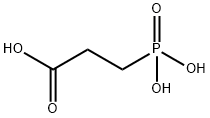
What is 3-PHOSPHONOPROPIONIC ACID?
Chemical properties
White powder
The Uses of 3-PHOSPHONOPROPIONIC ACID
3-Phosphonopropionic acid was used to functionalize the bulk phosphate glass surface.
Properties of 3-PHOSPHONOPROPIONIC ACID
| Melting point: | 165 °C |
| Boiling point: | 459.8±47.0 °C(Predicted) |
| Density | 1.677±0.06 g/cm3(Predicted) |
| refractive index | 1.5180 (estimate) |
| Flash point: | 150 °C |
| storage temp. | Inert atmosphere,Room Temperature |
| form | Powder |
| pka | 2.16±0.10(Predicted) |
| color | White |
| Water Solubility | 328g/L(20 ºC) |
| BRN | 1768923 |
| CAS DataBase Reference | 5962-42-5 |
| EPA Substance Registry System | 3-Phosphonopropionic acid (5962-42-5) |
Safety information for 3-PHOSPHONOPROPIONIC ACID
| Signal word | Danger |
| Pictogram(s) |
 Corrosion Corrosives GHS05 |
| GHS Hazard Statements |
H314:Skin corrosion/irritation |
| Precautionary Statement Codes |
P260:Do not breathe dust/fume/gas/mist/vapours/spray. P280:Wear protective gloves/protective clothing/eye protection/face protection. P363:Wash contaminated clothing before reuse. P303+P361+P353:IF ON SKIN (or hair): Remove/Take off Immediately all contaminated clothing. Rinse SKIN with water/shower. P305+P351+P338:IF IN EYES: Rinse cautiously with water for several minutes. Remove contact lenses, if present and easy to do. Continuerinsing. |
Computed Descriptors for 3-PHOSPHONOPROPIONIC ACID
| InChIKey | NLBSQHGCGGFVJW-UHFFFAOYSA-N |
New Products
(S)-3-Aminobutanenitrile hydrochloride 4-Methylphenylacetic acid N-Boc-D-alaninol N-BOC-D/L-ALANINOL Tert-butyl bis(2-chloroethyl)carbamate 3-Morpholino-1-(4-nitrophenyl)-5,6-dihydropyridin- 2(1H)-one Furan-2,5-Dicarboxylic Acid Tropic acid 1-Bromo-3,5-Di-Tert-Butylbenzene S-2-CHLORO PROPIONIC ACID ETHYL ISOCYANOACETATE 2-Bromo-1,3-Bis(Dimethylamino)Trimethinium Hexafluorophosphate 4-IODO BENZOIC ACID 3-NITRO-2-METHYL ANILINE 1-(2,4-DICHLOROPHENYL) ETHANAMINE (2-Hydroxyphenyl)acetonitrile 4-Bromopyrazole 2-(Cyanocyclohexyl)acetic acid 4-methoxy-3,5-dinitropyridine 1-(4-(aminomethyl)benzyl)urea hydrochloride 2-aminopropyl benzoate hydrochloride diethyl 2-(2-((tertbutoxycarbonyl)amino) ethyl)malonate tert-butyl 4- (ureidomethyl)benzylcarbamate Ethyl-2-chloro((4-methoxyphenyl)hydrazono)acetateRelated products of tetrahydrofuran
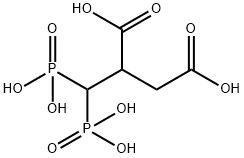
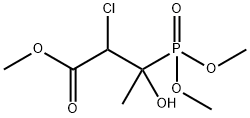
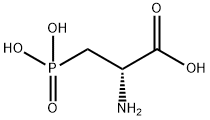
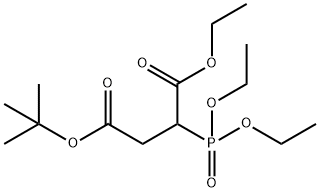
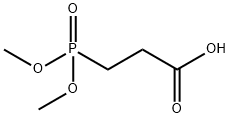



You may like
-
 3-Phosphonopropionic Acid CAS 5962-42-5View Details
3-Phosphonopropionic Acid CAS 5962-42-5View Details
5962-42-5 -
 3-Phosphonopropionic acid CAS 5962-42-5View Details
3-Phosphonopropionic acid CAS 5962-42-5View Details
5962-42-5 -
 1975-50-4 98%View Details
1975-50-4 98%View Details
1975-50-4 -
 2-HYDROXY BENZYL ALCOHOL 98%View Details
2-HYDROXY BENZYL ALCOHOL 98%View Details
90-01-7 -
 2-Chloro-1,3-Bis(Dimethylamino)Trimethinium Hexafluorophosphate 221615-75-4 98%View Details
2-Chloro-1,3-Bis(Dimethylamino)Trimethinium Hexafluorophosphate 221615-75-4 98%View Details
221615-75-4 -
 61397-56-6 CIS BROMO BENZOATE 98%View Details
61397-56-6 CIS BROMO BENZOATE 98%View Details
61397-56-6 -
 14714-50-2 (2-Hydroxyphenyl)acetonitrile 98+View Details
14714-50-2 (2-Hydroxyphenyl)acetonitrile 98+View Details
14714-50-2 -
 118753-70-1 98+View Details
118753-70-1 98+View Details
118753-70-1
Statement: All products displayed on this website are only used for non medical purposes such as industrial applications or scientific research, and cannot be used for clinical diagnosis or treatment of humans or animals. They are not medicinal or edible.